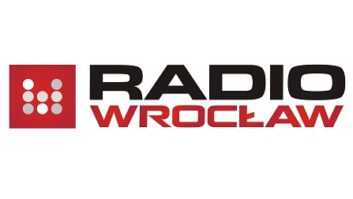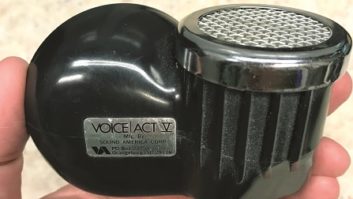
For those of us who remember what it was like to scurry for the nearest open payphone to file a field report, the introduction of the cellular phone opened up newsgathering options the late Paul White — the force behind CBS News — could have only imagined.
First-generation analog cellphones (which were the size of breadboxs) cut the ties from the land lines, if one had the right equipment. Subsequent generations of digital cellphones have made and are making the technology even more portable and useful.
In the ‘bag’
On Feb. 18, 2008, the FCC allowed cellular telephone providers to shut off analog cellular service. A “bag” phone is a familiar example of analog cell service; many radio stations used one (like the model on the left of the picture) for “live shots” or ad hoc remotes.
Bag phones usually had an RJ-45-like jack for the handset, into which users could plug interface equipment like Conex Electro’s CellJack 20 or CellJack 30, which would then allow users to connect a small field microphone mixer, mics and headphones. The change to a totally digital cellphone network has been in the works for years.
A digital telephone is capable of sending text messages and Instant Messages, and browsing the Internet. They have a Subscriber Identity Module, a SIM card. T-Mobile and Sprint have always had digital service. Other providers, such as Verizon, AT&T Mobility (Cingular), U.S. Cellular, Dobson and Cellular One, are making or already have made the transition.
Analog bag phones operated with a maximum of 3 watts of transmit power, which made them a useful tool when broadcasting outside built-up urban areas. The typical digital phone operates with 0.3 watts of transmit power. Most digital phones are handheld or flip open, and have a small headset jack (usually 2.5 mm) or another proprietary style connector, with which to get audio in and out of the phone.
News Flash Number One: Cellphone audio is not full fidelity. (OK, call it “Understatement Number One.”) The radio frequency and audio frequency limitations of the cell network yield a limited audio bandwidth.
News Flash Number Two: Sometimes a cellphone is the only way to get audio back for a broadcast because of time constraints and limited resources. It may be the most economical method, given the available free minutes on nights and weekends on most post paid cellphone plans.
“Yes, POTS, ISDN and IP codecs are the right way to get ‘broadcast quality’ audio back to the station,” says Joe Klinger of manufacturer JK Audio, “but sometimes you just don’t have time, and the majority of small stations and reporters don’t have the money (to use or connect one of those methods). Usually the ‘money quote’ is caught on a tape recorder, or even a cellphone.”
That’s the playing field on which we operate. While there are more elegant solutions to sending high-quality audio by cellphone, most of those work by sending audio as digital data on a broadband data channel. We’ll deal with these in a future column.
Call when you can
A cellphone’s 2.5 mm headset jack has a standard convention of Tip–send, Ring–receive and Sleeve as the ground. Some phones, like the Nokia 6103 I use, need a special adapter to interface that TRS convention to the proprietary connector. My phone and others also will allow the wireless connection of Bluetooth audio devices.
Conex Electro-Systems (www.conex-electro.com) makes the FlipJack (FJ) line of audio interfaces for cellphones. The FJ10 lets a user connect two inputs and a headset to a cellphone’s headset jack. The FJ500 also allows the use of a cellphone’s headset jack to send and receive audio, and also allows the unit to be connected to a land line telephone’s headset jack.
The FJ700 allows the connection of four microphones and four headphones to the cell connection and land line connection capability. John Plattner of Conex said the company’s CellJack line morphed into the FlipJack line because “the CellJack line got its power from the bag phone (RJ-45 connector)” and it was difficult to design a device to get power from the 2.5 mm headset jack. The FlipJack line is battery-powered.
The CircuitWerkes MicTel (www.broadcastboxes.com), which I reviewed in 2005 for Radio World, lets users connect to the cell network, a land line handset and a broadcast +4 line-level input (POTS codec, loop, ISDN, etc.).
(click thumbnail)Analog and digital phones sit on either side of the Cellphone IFB.Cellphone IFB (CellphoneIFB.com) is a device originally made for television crew members and talent who need to hear IFB (interruptible foldback mix of program and director cues) over a cellphone. The device has circuitry that splits the send and receive signal, and has a mute switch. It clips to a belt and connects to the headset jack of a cellphone.
This design allows radio reporters to do “live shots” with a professional-quality XLR-connected microphone (much better than speaking into the standard cellphone microphone) or send nominal line (–10 dB) level audio over the cell connection.
The Cellphone IFB also allows interactive remotes where the talent can broadcast among a crowd or on the run, and not be tied down to a mixer. My reporting from Daytona 500 Victory Lane for CBS News Radio in February was done with a Cellphone IFB and Nokia 6103 (pictured).
JK Audio has a range of devices that allow the connection of microphones, mixers and headphones to a cellphone’s 2.5 mm headset jack (or proprietary adapter) like the Daptor One and Two, RemoteMix and ComPack. The Remote Mix and ComPack also will connect to land-line RJ-11 (service) connections and land-line handset connections.
(click thumbnail)JK Audio’s Daptor Three utilizes Bluetooth technology.
The company also has embraced Bluetooth technology, with wireless audio connection solutions like the Daptor Three and all-in-one RemoteMix 4 mixer. But JK Audio did not rest on those substantial accomplishments. I’ve seen a prototype of the next big thing from Sandwich, Ill.: the BluePack, which uses Bluetooth connectivity to make a seamless wireless connection of a mic and headphones to a cellphone or Bluetooth-equipped laptop.
Some observers would never consider sending audio to be used in an over-the-air broadcast over the cellular network. Those observers don’t realize news does not normally happen in front of a nailed-up, studio-quality audio circuit.
Budgets and time constraints won’t let most stations purchase and install those circuits (if they are even available), and events (to include revenue producing opportunities) operate on their own schedule.
As for those of us who produce news and ad hoc remotes in the real world, we need to recognize the limitations of the cell network, and deal with them effectively so we can take our listeners to where news is being made, when it is being made, and do so economically with the best audio quality possible.
Next time I’ll look at one-piece and smaller-format digital audio recorders (recorders without removable memory and SD or smaller memory cards), how they are used and tips and tricks to maximize their usefulness in the field. Your tips, suggestions and questions for future columns are, as always, appreciated.
Road Warrior columns are archived at radioworld.com.









